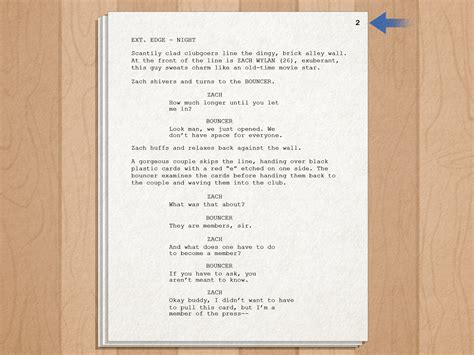How To Write a Screenplay: A Comprehensive Guide for Aspiring Screenwriters
So you want to write a screenplay? The world of filmmaking is exciting, challenging, and incredibly rewarding. This guide will walk you through the essential steps, from initial idea to final draft, helping you craft a compelling script that grabs attention and leaves a lasting impact.
1. Developing Your Idea: From Concept to Logline
Before you dive into writing, you need a solid foundation. This begins with a compelling concept. What story are you trying to tell? What's the core conflict? What's at stake?
Brainstorming and Idea Generation:
- Freewriting: Let your ideas flow freely onto paper without judgment. Don't worry about grammar or structure at this stage.
- Mind Mapping: Visually organize your thoughts and connect related ideas.
- Character Sketches: Develop compelling characters with clear motivations and flaws. Think about their backstories, relationships, and arcs.
Crafting Your Logline:
Your logline is a concise summary of your screenplay – a single sentence that encapsulates the core conflict and stakes. It's crucial for pitching your idea and helping you stay focused throughout the writing process. A strong logline will pique interest and make readers want to know more. For example: "A cynical detective must confront his past when he investigates a series of murders linked to a decades-old cold case."
2. Structure: The Foundation of a Great Screenplay
Screenplays follow a specific structure, often referred to as the "three-act structure." While variations exist, understanding this framework is key to building a compelling narrative.
Act I: Setup
- Introduction: Introduce your main character and setting.
- Inciting Incident: The event that throws your protagonist's world into disarray and sets the story in motion.
- Plot Point 1: A major turning point that commits the protagonist to the central conflict.
Act II: Confrontation
- Rising Action: A series of escalating events that build tension and suspense.
- Midpoint: A crucial moment that shifts the power dynamic or reveals crucial information.
- Plot Point 2: Another significant turning point that raises the stakes and intensifies the conflict.
Act III: Resolution
- Climax: The highest point of tension and conflict – the moment of truth.
- Falling Action: The aftermath of the climax, where loose ends are tied up.
- Resolution: The final outcome of the story.
3. Writing Your Screenplay: Scene by Scene
Once you have your structure, it's time to start writing scene by scene. Focus on action, dialogue, and visual storytelling.
Writing Effective Scenes:
- Show, Don't Tell: Use vivid descriptions and actions to convey information rather than relying on exposition.
- Compelling Dialogue: Write realistic and engaging dialogue that reveals character and advances the plot.
- Visual Storytelling: Describe the setting and action in detail, allowing the reader to visualize the scene.
- Scene Headings (Slug Lines): Clearly identify the location and time of each scene (e.g., INT. COFFEE SHOP - DAY).
- Action Lines: Describe the visual action of the scene concisely.
- Dialogue: Format dialogue correctly, with character names centered above their lines.
- Parentheticals: Use sparingly to guide the actor's delivery.
4. Revision and Refinement: Polishing Your Work
Writing a screenplay is an iterative process. Expect to rewrite and revise multiple times.
Self-Editing:
- Read your script aloud: This helps identify awkward phrasing and pacing issues.
- Seek feedback from others: Get critiques from trusted friends, colleagues, or writing groups.
- Focus on character arcs and plot holes: Ensure your story is consistent and satisfying.
Professional Feedback:
Consider seeking feedback from script consultants or editors for a more objective perspective.
5. Formatting Your Screenplay: Following Industry Standards
Proper formatting is crucial for getting your screenplay noticed. Use a reputable screenwriting software or follow established formatting guidelines. Incorrect formatting can lead to your script being dismissed before it's even read.
By following these steps, you'll be well on your way to writing a compelling and professional screenplay. Remember, practice and persistence are key! Keep writing, keep learning, and keep refining your craft. Good luck!
